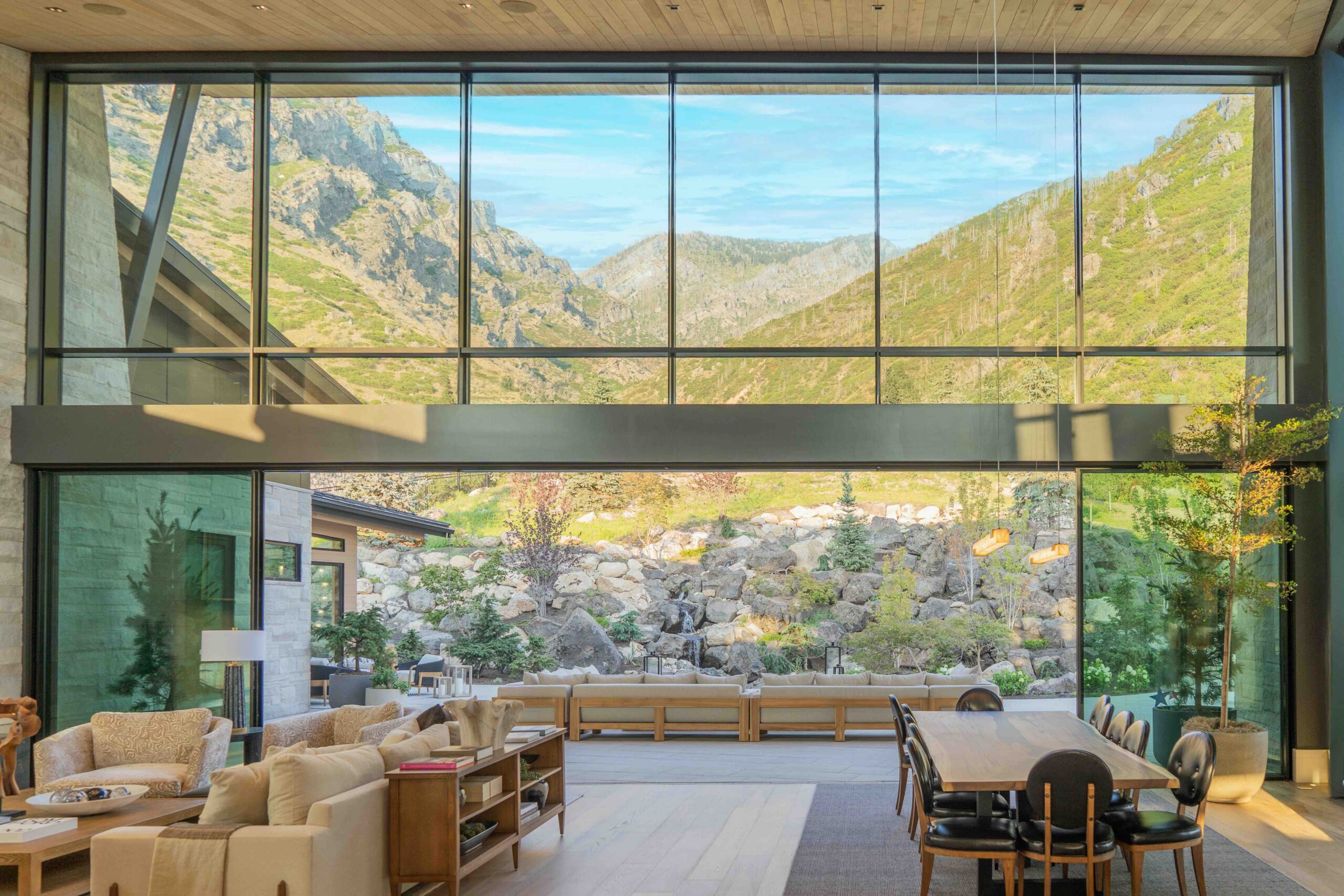
26 Aug 2025 How to Create Large-Scale Glass Walls Without Compromising Performance
Designing large expanses of glass in a building is incredibly rewarding — they bring in natural light, offer stunning views, and create a powerful sense of openness. But getting it right means more than just aesthetics. When done well, a glass wall performs just as beautifully as it looks — energy-efficient, structurally sound, and comfortable year-round. Here’s how we approach it.
1. Choose the Right Glazing
Not all glass is created equal. For large-scale applications, it’s essential to use high-performance glazing. Low-emissivity (Low-E) coatings help regulate heat transfer, while double or triple glazing provides the thermal and acoustic insulation that’s necessary for comfort and energy efficiency. For safety and durability, we rely on laminated or tempered glass — especially important in high-traffic or high-wind environments.
2. Support It Strategically
With larger spans, you need smart structural solutions. Minimalist steel or aluminum mullions offer strength with a slim profile, but sometimes we go even further with glass fins — vertical panels that support the wall without disrupting its transparency. In some cases, we use tension cables or point-fixed systems to keep the design clean and open.
3. Control the Thermal Bridge
If we’re using aluminum framing (which we often are for its strength and slimness), thermal breaks are non-negotiable. These insulated barriers in the frame prevent heat from transferring between indoors and out, which makes a big difference in performance, especially in extreme climates.
4. Manage Sunlight and Glare
Glass walls can easily overheat a space if solar control isn’t part of the plan. We often incorporate coatings that reduce UV and infrared heat gain. Depending on the orientation, we might also use external shading — like horizontal louvers or vertical fins — to cut glare without sacrificing the view. And for dynamic spaces, electrochromic (smart) glass lets the façade respond to changing light throughout the day.
5. Weatherproofing is Critical
Large glass walls have to stand up to the elements. We pay close attention to sealing — using high-performance gaskets and silicone joints — and often specify curtain wall systems with rain screen designs to drain and ventilate moisture. Proper detailing here ensures durability and long-term performance.
6. Account for Building Movement
All buildings move, especially larger ones. Whether it’s thermal expansion, seismic activity, or wind sway, your glass wall has to flex without cracking. We plan for this with expansion joints, flexible anchors, and movement-tolerant sealants.
7. Design with BIM
For projects of this scale, Building Information Modeling (BIM) is a must. It helps coordinate the glass wall with the rest of the building — structure, HVAC, lighting — and lets us simulate how the wall will perform before anything is built.
8. Work with the Right Team
Finally, no matter how good the design is, execution is everything. We work closely with experienced façade contractors who understand the tolerances and complexities involved in large-scale glass installations. Every millimeter counts, and the right team ensures the final product lives up to the vision.
Final Thoughts
A glass wall can be the highlight of a building — but it has to work hard, too. With the right materials, detailing, and execution, it’s entirely possible to design expansive glass façades that meet the highest standards of performance, comfort, and longevity.